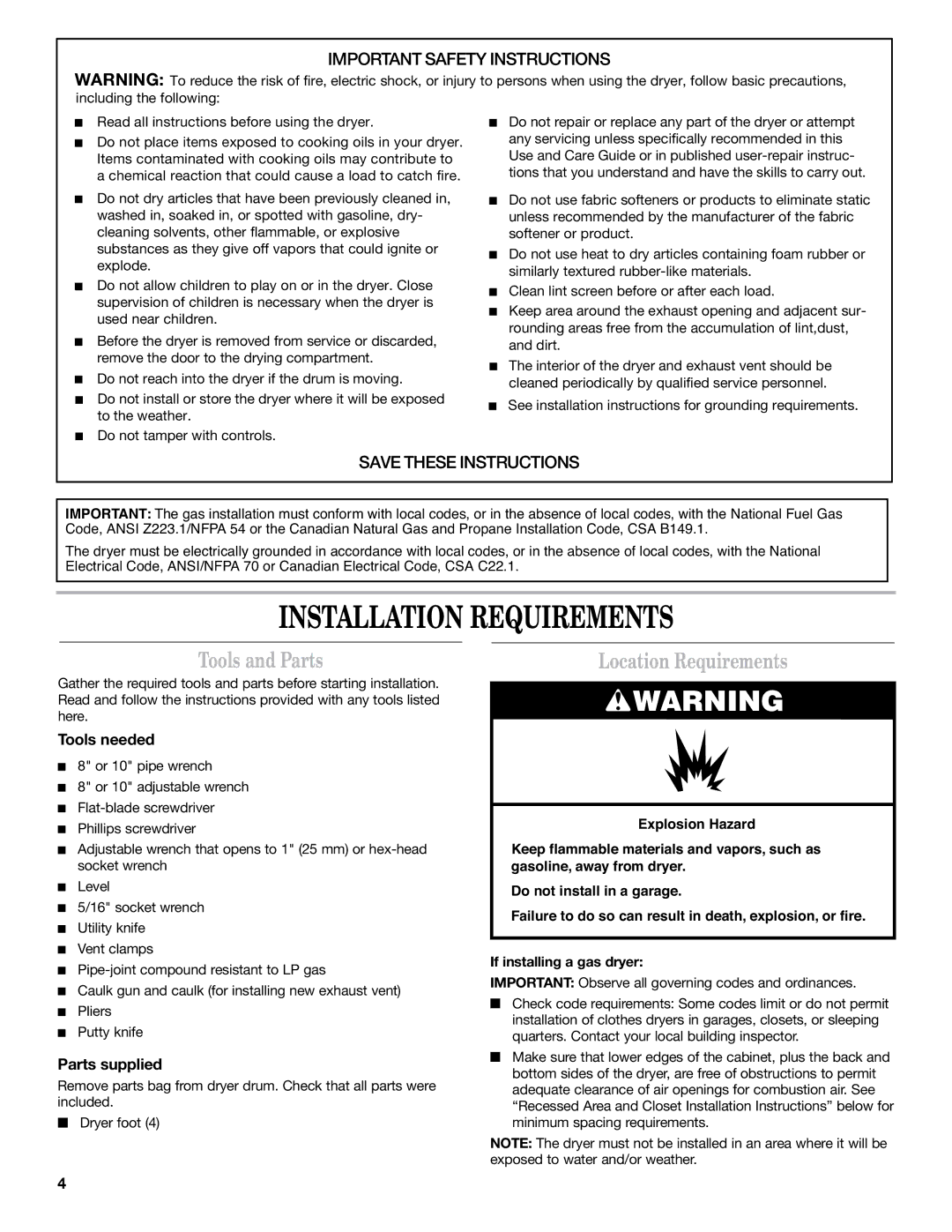8577213C specifications
The Whirlpool 8577213C is a versatile and innovative appliance that stands out in the crowded market of kitchen solutions. As a part of Whirlpool's extensive range, this model is designed to meet the demands of modern cooking while offering user-friendly features.One of the most notable characteristics of the Whirlpool 8577213C is its efficient design. This appliance is crafted with high-quality materials, ensuring durability and longevity in daily use. Its sleek and modern aesthetic not only enhances the kitchen’s appearance but also makes cleaning a hassle-free experience. The smooth surface helps to resist stains and marks, preserving its visual appeal over time.
Functionality is at the core of the Whirlpool 8577213C. It comes equipped with an array of cooking technologies that allow users to prepare meals with precision and ease. This model features advanced cooking settings, including multiple temperature ranges and preprogrammed options that cater to various cooking needs. Whether you're roasting, baking, or broiling, this appliance delivers consistent results every time.
Another standout feature is its intuitive control panel, which simplifies the cooking process. The user interface is designed to be straightforward, making it accessible for cooks of all skill levels. With clearly labeled buttons and easy-to-read displays, users can quickly navigate through options and set their desired cooking modes.
The Whirlpool 8577213C also emphasizes energy efficiency, adhering to ecological standards while delivering powerful performance. It is engineered to minimize energy consumption, making it an environmentally friendly choice without compromising cooking quality. This model not only saves on utility bills but also aligns with the increasing consumer demand for sustainable appliances.
In addition to its technical features, safety is prioritized in the Whirlpool 8577213C design. It includes safety lock functions and automatic shut-off settings. These features provide peace of mind while cooking, knowing that the appliance will operate safely even during busy kitchen routines.
In summary, the Whirlpool 8577213C represents the perfect blend of style, efficiency, and advanced technology. With its durable construction, user-friendly interface, energy-saving capabilities, and safety features, it is an essential tool for any modern kitchen. Whether you're a novice cook or a seasoned chef, this appliance enhances the culinary experience, streamlining the process and maximizing creativity in the kitchen.

